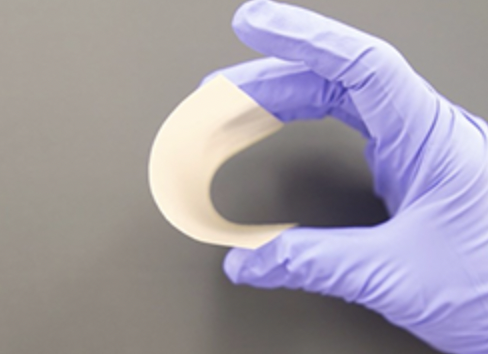According to a report by Space Capital, space infrastructure companies received a record-breaking $14.5 billion of private investment last year, up more than 50% from 2020. Thanks to “mega-rounds” of $250 million or more by Planet Labs, Sierra Space, and Elon Musk’s SpaceX, more than $4.3 million was added in the fourth quarter alone. But billionaires aren’t the only ones with a vested interest in intergalactic innovation.
There is a great effort from not only high-profile investors and startups to develop new space technologies but also from Governments and Aerospace & Defense giants from around the world with tremendous R&D power.
The Space Economy is a multi-billion dollar industry today. Still, many expect to surpass $1 trillion in the coming decades, bringing new opportunities for investors to capture this growing segment of the global economy. The Commerce Department is already throwing its support behind the American space industry with ambitious goals for regulatory reform and promotional efforts.
Space stocks have been under intense selling pressure in the recent rotation out of speculative growth investments. “many endeavors will indeed fail, but there will be generational winners that emerge out of the rubble, ” Deutsche Bank analyst Edison Yu reminded investors in a recent note to clients. This article will look at three space tickers with out-of-this-world potential that should appeal to our long-term-minded readers at these levels.
Momentus (MNTS) is a pure-play space infrastructure company. Unlike Virgin Galactic, which is geared towards being a luxury travel provider, Momentus aspires to be a space infrastructure company for commercial endeavors. This Santa Clara, California-based company states the following as its goal for 2025:
“We aim to be able to provide a full range of infrastructure services in microgravity and deep vacuum, which will open the door to infinite manufacturing possibilities. Impossibly large next-generation structures will continue to pave new paths for even greater human development in space.”
For 2035, they talk about asteroid and moon mining! Before we get carried away, let’s focus on the here and now.
Momentus has developed what they call a space transfer vehicle. In short, it aims to offer a ride-sharing service for satellites. You see, most satellites need highly precise orbits. Booking your own launch on, say, a SpaceX Falcon 9 rocket to accomplish that precise orbit is mighty expensive. Momentus allows multiple satellites to hitch a ride on their Vigoride vehicle. In turn, that vehicle will take each satellite to its needed orbit.
Momentus recently announced that it had signed multiple launch agreements with SpaceX for four upcoming SpaceX Transporter missions, including the Transporter-6 mission targeted for October, Transporter-7 targeted for January 2023, Transporter-8 targeted for April 2023, and Transporter-9 targeted for October 2023.
Momentus hopes to meet the needs of customers that want to move their payloads to specific orbits that aren’t accessible directly from Earth-based launches. As of Wednesday’s close, MNTS stock was down 51% in 2022.
Leading manufacturer of small satellites, Terran Orbital (LLAP) provides end-to-end satellite solutions by combining satellite design, production, launch planning, mission operations, and in-orbit support to meet the needs of the most demanding military civil, and commercial customers.
Serving the United States and Allied aerospace and defense industries primarily, Terran was recently awarded Mission of the Year by the American Institute of Aeronautics and Astronautics Small Spacecraft Technical Committee for its Cislunar Autonomous Positioning System Technology Operations and Navigation Experiment, otherwise known as CAPSTONE, in cooperation with NASA and Advanced Space. The groundbreaking lunar orbiter is set to complete its mission at an unprecedented low cost in record time.
The company is both building spacecraft for other customers and working on its own system of 96 Earth imagery satellites, which co-founder and CEO Marc Bell Bell described as “Earth observation 3.0.” The satellites combine two types of imagery collection technology, optical and synthetic aperture radar, Bell said, so that Terran can “overlay the data” and provide more in-depth customer analysis.
Terran reported record-breaking Q2 revenue results, and management expects to build on that solid momentum in the back half of the year. The company generated revenue of $21.4 million in the second quarter, indicating a 127% year-over-year increase. Net loss was also down at $32.3 million, nearly half the $71.4 million reported for the previous quarter.
Terran’s solid prospects and existing orders make for reliable indicators of where the company is headed. As of June 30th, the company had built its pipeline to more than 140 opportunities, representing over $16 billion in value. Its backlog is up 200% over the past six months to a record $224.1 million.
Of the six analysts offering recommendations for LLAP, all six rate the stock a Buy. A median price target of $10 represents an increase of 127% from its current price. Stifel analyst Erik Rasmussen recently initiated coverage of LLAP with a Buy rating and an $8 price target. He views the company’s leadership in the design and manufacture of small satellites and its technical capabilities as crucial differentiators and believes Terran is on the cusp of a tremendous and growing opportunity in the small satellite market.
A few big names are making headlines in space investing, but the truth is, many companies that could make substantial future contributions to the industry may still be in their infancy and may not be getting much notice yet. Further complicating matters, the in-depth knowledge, and understanding of this highly specialized industry required to adequately evaluate these companies can be overwhelming.
Since many companies in the space arena haven’t had much time to establish themselves yet, space investing can be risky. “It’s important for investors to realize that investment in the space economy requires specialist expertise. We believe this will become more apparent in 2022 as some of these overvalued companies come back down to Earth, and the quality companies rise above,” Space Capital managing partner Chad Anderson said.
Why not let the pros take care of some of the leg work while casting a wide net over many exciting prospects in the field by choosing a managed fund that offers exposure to attractive prospects in the burgeoning space industry?
Procure Space ETF (NYSE Arca: UFO) is the first global aerospace & defense fund. UFO tracks the S-Network Space Index, which focuses on companies significantly engaged in space-related activities. The companies included in this fund span several industries, including (a) satellite-based consumer products and services; (b) rocket and satellite manufacturing, deployment, and maintenance; (c) space technology hardware; (d) ground equipment manufacturing; and (e) space-based imagery and intelligence services.
The fund divides its constituents into two tranches. The first tranche is comprised of non-diversified companies that derive at least 50% (but typically 100%) of their revenues from space-related activities. The second tranche is comprised of diversified companies that play a significant role in the production of space technology and equipment. The non-diversified tranche is then given 80% of the weight of the Underlying Index, and the diversified tranche is given 20% of the weight. UFO price is down 16% so far this year. The fund pays a comfortable 1.71% yield and comes at a cost of 0.75%.















